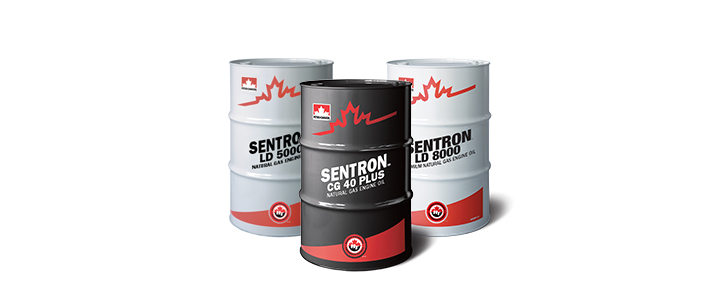
Find your Country and language
Lubricants Beyond Today's Standards TM
Petro-Canada™ Lubricants' distribution network extends to over 80 countries worldwide
Excluding the regions of Crimea, Donetsk and Luhansk

Petro-Canada™ Lubricants' distribution network extends to over 80 countries worldwide
Nitration of stationary gas engine oil (GEO) remains a leading concern for operations. Why? Because of its potential to cause serious problems for today’s engines, including shortened filter life, varnish and sludge deposits and sticking piston rings.
This article explores:
Nitration of natural GEOs remains a leading concern for operations. Why? Because of its potential to cause serious problems for today’s engines, including:
Although the issue is especially prevalent for low-speed (less than 700-800 rpm) 4-stroke stoichiometric and lean engines that operate at various loads, nitration can also occur in engines running at higher speeds.
Knowing the causes of nitration and how to correct them is vital to maintaining reliable and efficient operations, including the ability to effectively extend oil drain intervals.
Nitration of the lubricant occurs when there is enough heat, pressure and even oxygen inside the combustion chamber to break down atmospheric nitrogen from its stable N2 form into individual nitrogen atoms. These reactive atoms can then combine with free oxygen to form nitrous oxides, commonly referred to as NOx (i.e., NO and NO2).
From here, 2 types of nitrogen compounds can be formed:
Organic nitrates are typically the leading form of nitration observed in natural GEOs.
As these nitrates are formed they are wiped into the crankcase by the piston rings. Though they are soluble in the engine oil initially, when an excess level is reached these nitrates can drop out of the lubricant to form harmful varnish and deposits in an engine’s rocker and valve assembly. These deposits can also cause piston ring sticking and plugged oil filters.
A number of factors increase the occurrence of nitration. Some of the most prominent are:
The first step is to correct the causes of nitration in the first place; however, diligent monitoring is also key. This includes:
Operators should also consider monitoring engine oil nitration through known techniques such as Fourier Transform Infrared spectroscopy (FTIR). Oil analysis laboratories will determine the extent of nitration by comparing the used engine oil sample to the reference spectrum of the same oil in its fresh state.
Selecting the right product for the application is, of course, also critical.
Petro-Canada Lubricants’ SENTRON™ engine oils naturally offer excellent nitration resistance due to the use of high-quality, 99.9% pure base oils.
In addition, premium gas engine oil products such as SENTRON LD 8000 and SENTRON 590, formulated with selected additives, provide enhanced nitration control for less downtime and better engine efficiency.

